All dairy cows and dairy cows are different, but one thing is always true — cows are habitual animals and thrive on routines, so dairy farmers work hard to make sure their cows are wellcared for and their routines are consistent.
Dairy cows produce the safe, wholesome milk we love, but have you ever wondered how they do it? Take a walk with us through a day in the life of a dairy cow.
Research shows the average dairy cow spends her time:
- Eating: 3-5 hours (9-14 meals per day)
- Lying down or resting: 12-14 hours
- Standing or walking: 2-3 hours
- Drinking water: 30 minutes
- The remaining 2.5-3.5 hours are used for herd management activities (like check-ups from a veterinarian) or their daily milking routine.
5:00 a.m. – Morning Milking
Dairy farmers use milking machines to milk their cows 2-3 times per day. It only takes 5-7 minutes for a cow to be milked! Some farmers milk in a parlor, while some have adopted robotic milker technology – both are safe, quick and stress-free ways to milk cows.
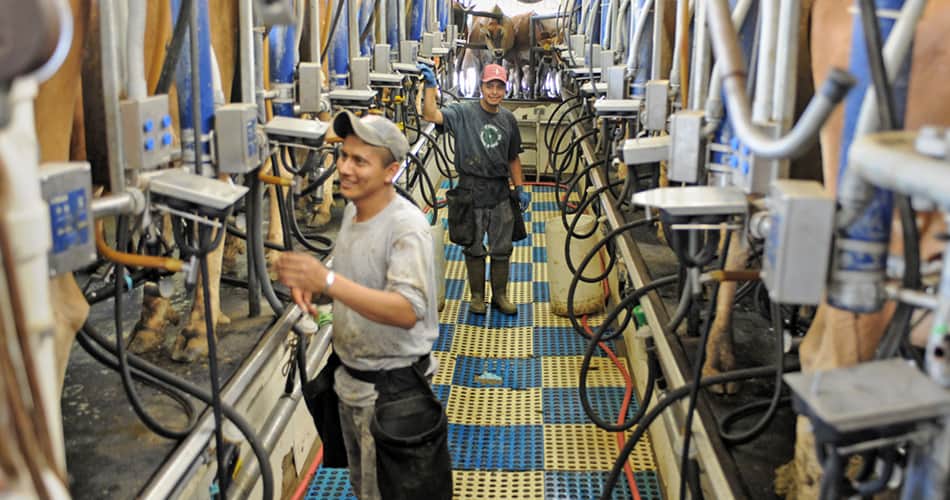
7:00 a.m. – Feeding Time
Dairy farmers work with nutritionists to create a specially formulated diet called a total mixed ration (TMR) that is made of hay, grain, corn silage, proteins (like soybean meal), vitamins and minerals, which are combined in a giant mixer and fed to cows.
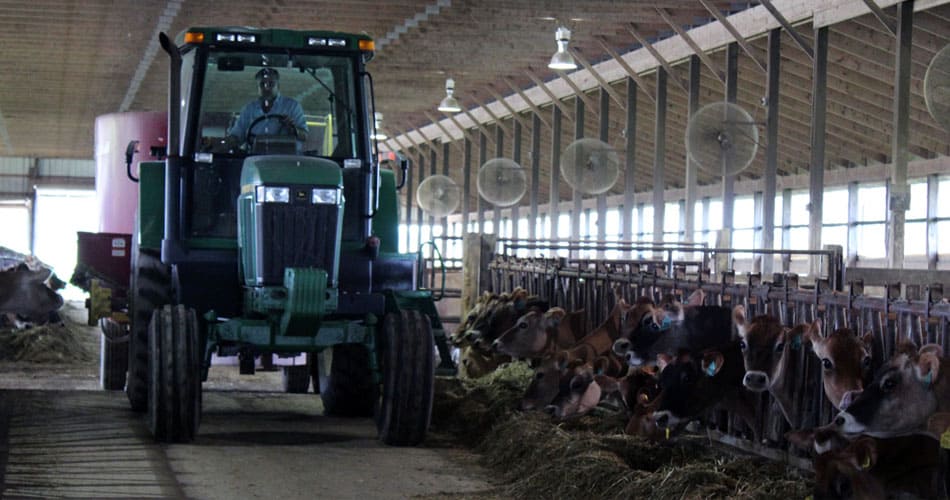
9:00 a.m. – Relaxing in the Barn
Most dairy cows spend their days in free stall barns, named because they have free choice of any stall they want to lay down in. Stalls are bedded with straw (shown below), sand, rubber mattresses or even water beds. Barns are also equipped with fans to keep cows cool and grooved floors to prevent slipping when they are on the move. Not only that, but they are never more than a few steps away from the buffet!
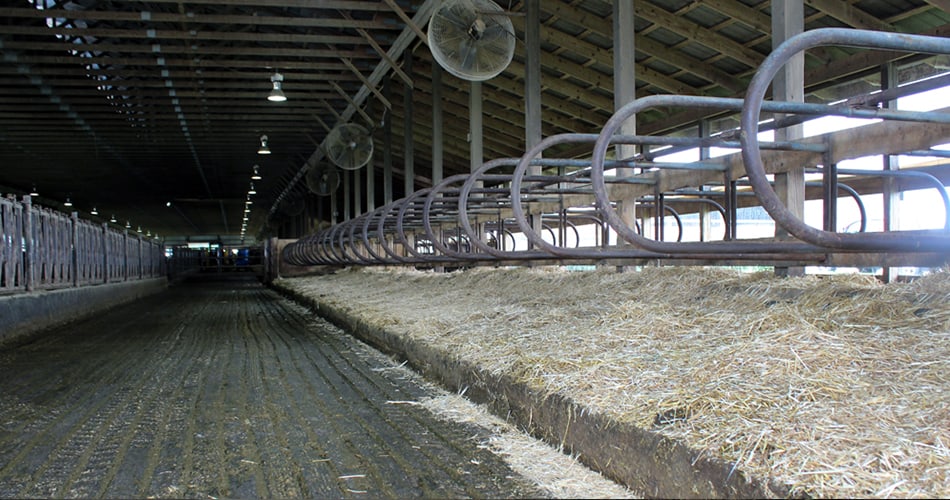
12:00 p.m. – Still Eating
Dairy cows have access to feed and fresh water all day, so they never go hungry. Dairy cows eat about 100 pounds of feed and drink 30-50 gallons of water (about a bathtub full) each day.

2:00 p.m. – Relaxing in the Barn Again
When dairy cows aren’t eating, sleeping or being milked, they’re busy making manure. One cow produces about 17 gallons of manure a day – that’s enough natural fertilizer to grow 56 lbs. of corn or 84 lbs. of tomatoes. Wonder where all that manure goes? Check out this video to get the Scoop on [Cow] Poop.
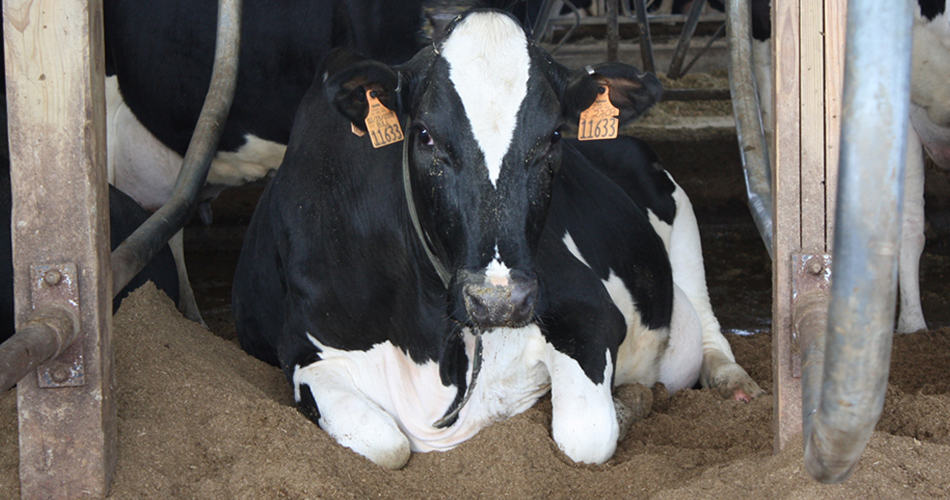
3:00 p.m. – Farmer Check-ups
Dairy farmers keep a close eye on their cows to make sure they are happy and healthy. They also work closely with their veterinarian to take care of any cows that might become sick. If a cow does become sick and the veterinarian decides she needs antibiotics, she is moved to a separate pen where she is closely monitored and her milk is disposed of so it never enters the food supply.
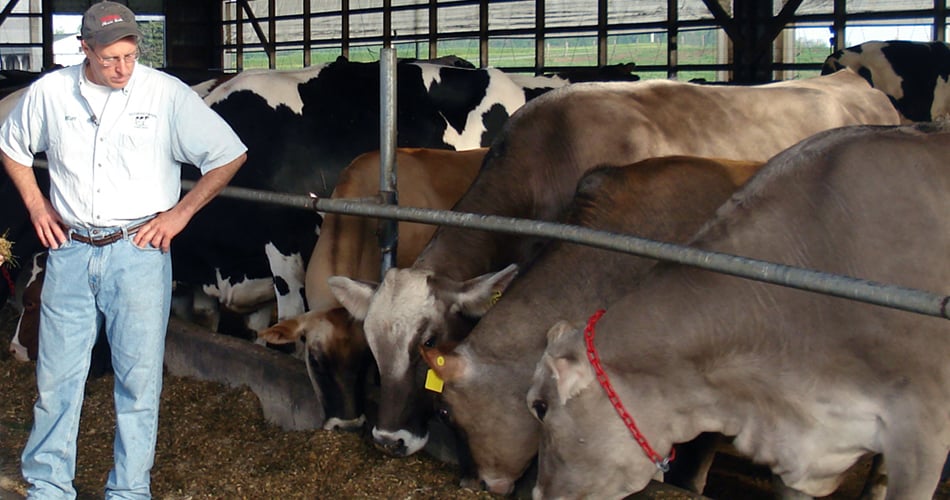
5:00 p.m. – Evening Milking
The average dairy cow produces about 6 gallons of milk a day – that’s more than 2,275 gallons a year! Dairy farmers work hard to ensure that all milk is safe and wholesome. In fact, from farm to fridge, milk is never touched by human hands!
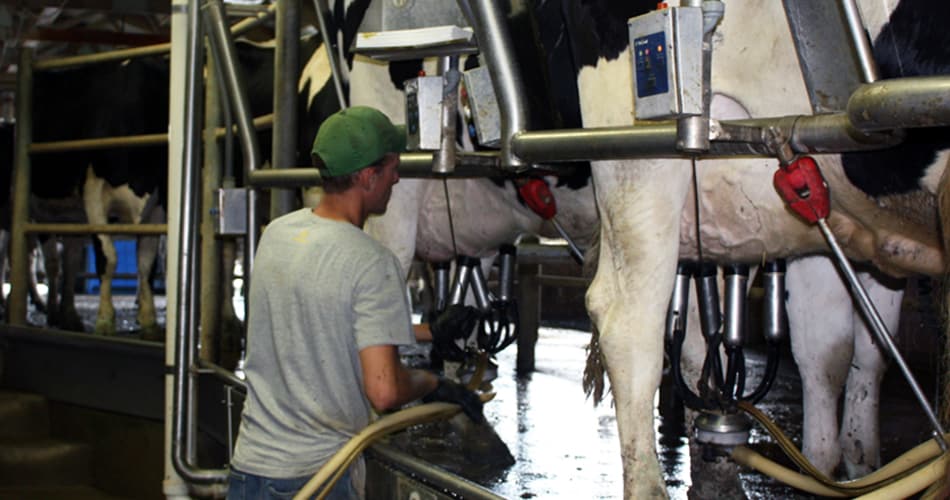
8:00 p.m. – Goodnight
No day is complete without a goodnight hug, and dairy farm kids are more than happy to help spread the love.
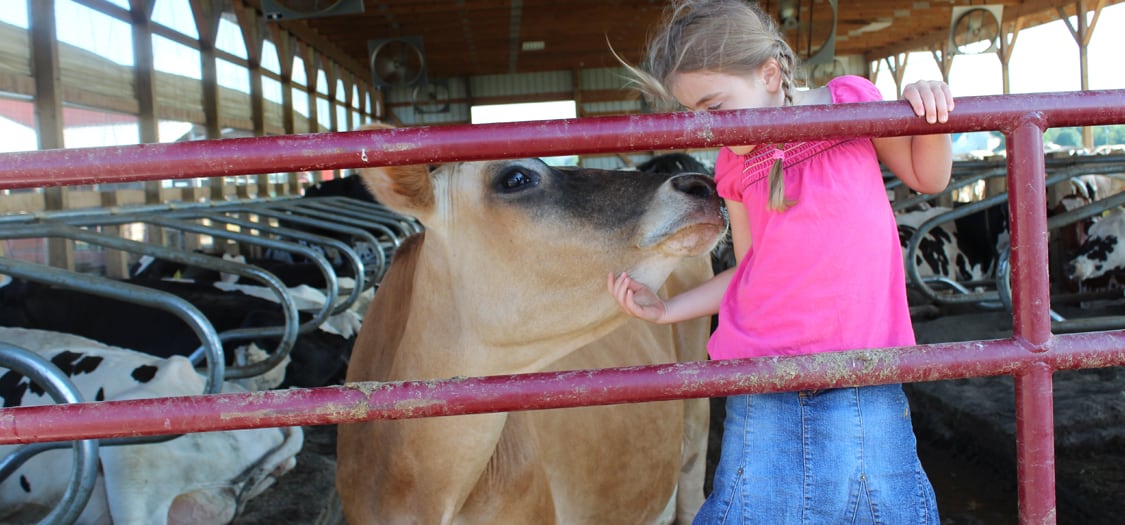
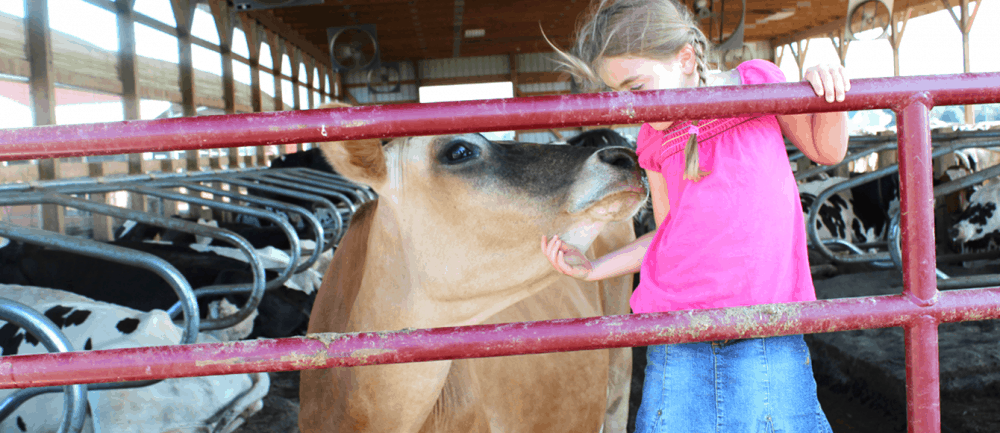

Cows are cute. They go “moo,” and are some of the most useful animals on Earth. Dairy cows make milk that is used in breakfast cereals, tea, coffee, and when the cow dances a jig, milkshakes.
The other end of the cow produces a product that feeds plant life, fuels electric generators, and provides the material necessary for the ink bands on typewriters, toner for print machines, and BiC pens for an unlimited amount of pure b,… uh, nonsense that either protects malefactors from immediate exposure, or gives people something to laugh at. So you see, life on Earth, or Mars, could not exist without cows. Uh, moo, baby!
The milk they make is amazing!
I absolutely love your comment! It made chuckle and honestly that’s not easy!
Thank you
super cool and awsome and good
interesting
At what time of day do they graze and engage in other natural behaviors? Where are all the calves?
These are great questions Jim! Most Ohio and West Virginia dairy cows live in freestall barns where they have 24/7 access to fresh food, often called a TMR or total mixed ration, so they graze on that feed all day. Other natural cow behaviors like resting and socializing are done all day long from the comfort of the climate-controlled freestall barns as well. Some farmers in our region do turn their cows outside to pasture when the weather permits, and their schedule looks almost exactly the same – lots of eating and relaxing!
Calves and heifers (think teenagers) are typically housed in separate pens from the cows because their schedules and diets are much different. They’re often grouped by age so their diets can be customized to the stage of life they’re in, and also spend their days eating, resting and socializing – just not being milked.
I hope this helped answer your questions!
– Erin, American Dairy Association Mideast
Ohh yeah I love it and I love working dairy
yes. good question. what does happen to the calves?
This is Great seeing I’ve gotten my milk from the farm for 60 yrs! My question is at times the cows are very dirty, manure, and then they are Very clean! How do the wash their cows?
Is the morning and afternoon milk mixed together?
Indeed kind sir.
Good
Twice a day and at night. Milk
I love cows
Great information!
Love a cow …. And love milk ☺️
This is so helpful because I am in the middle of doing a Interest project on Dairy Farmers. Cows are adorable and milk is good for me on a daily basis.
thanks
thanks
What other animals produce milk?
I love cows! I wish they wouldn’t give them hormones. It hurts the cows, and you! The only benefit it brings is, more money and milk! That’s the only reason that they make 6 gallons a day. They are only supposed to give a few liters a day for their babies! That’s it!
What do the calves eat if they don’t get to drink their own mom’s milk? And what happens to the male calves? And do any of the calves ever get to spend time with their mom’s as they’re growing up?
super cool and awsome and good and its very nice of them
Regarding this comment: “Calves and heifers (think teenagers) are typically housed in separate pens from the cows because their schedules and diets are much different. They’re often grouped by age so their diets can be customized to the stage of life they’re in, and also spend their days eating, resting and socializing – just not being milked.”
Isn’t this missing a key fact? I’m not anti-dairy, but I thought calves were kept apart from their mothers so the calves wouldn’t siphon off some of that milk the farmer wants to sell.
Really? I’m pretty sure the calves would starve if they were separate from their mothers… it’s best to lose the sale of the small amount of milk for a sort time, then to lose the calves completely for future sales…
it is really cool how you have an entire day planned for them but don’t they get bored of the same old thing .
Yeah that’s what I was thinking
They would get a lot more bored being stuck inside enclosed in a stall than out in a field full of grass where they can move around and enjoy being with their herd. In feel sorry for them
Acknowledges for penmanship such a worthy column, I stumbled beside your blog besides predict a handful advise. I want your tone of manuscript…
Your article providing insight into a day in the life of a dairy cow is eye-opening! The attention to detail and the comprehensive view of their daily routines and care practices are commendable. It’s important for consumers to understand the dedication and commitment involved in dairy farming and the welfare considerations for these animals. Your article highlights the importance of providing a comfortable and nurturing environment for dairy cows. Thank you for sharing this informative piece.
For More Info: https://hooftrimming.co.nz/
Why keep them in barns instead of allowing them to move around and enjoy their time in open pasture? I can’t see how the Cows get any benefit from being kept in confined stalls instead of out in the sun eating fresh grass and doing what they naturally do?
Maybe I am missing something but dairy Cows already face some very poor outcomes and endure traumatic processes to produce Milk, so keeping them inside and confined seems like taking away the only good thing about their lives- wandering about and hanging with their mates out in fields full of the grass they love.
What is the reason for using stalls and feeding custom diets instead of open pasture and fresh grass?